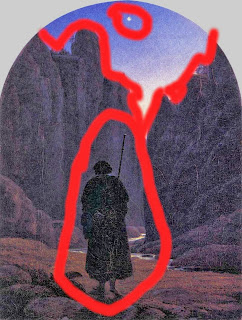Most of the revolutions of 1830 and 1848 were failures, just as most historians conclude. Nearly every rebellion was crushed, and any gains made during the revolutions were lost. Thousands of rebels, and government forces lost their lives in bloody, unproductive wars.
One of these such wars was the Hungarian Revolution of 1848. This revolution was led by Louis Kossuth, and consisted primarily of Hungarian students and young adults rebelling against the foreign Austrian rule. The revolution gained ground temporarily, when Metternich was forced to flee Austria. When this happened, the Austrian emperor was forced to concede to the requests of the rebels. This revolution was powered by a strong nationalist movement, this is an excerpt from the Hungarian National song, "We truly swear the tyrant's yoke/ No more to bear!/ A miserable wretch is he/ Whofears to die, my land, for thee!/ His worthless life who thinks to be/ Worthmore than thou, sweet liberty!" This fierce nationalism, led by Kossuth did not last forever. The Russian Tzar used the principle of intervention and assisted the Austrians in crushing the rebellion.
 |
| This shows Russia and Austria "Overwhelming the Hydra of the Revolution" |
The country was reverted almost entirely back to how it was pre-revolution, however, Metternich never did return to power. The revolution was rated to be a 2/5 on the success scale.
http://www.educreations.com/lesson/view/hungarian-revolution/13391210/?s=yyxHk3&ref=app
Another rebellion was the Frankfurt Assembly of 1848-49, this rebellion was a liberal, nationalist movement. The rebellion was against the conservative government and forces of Fredrick William IV of Germany. The rebellion was very successful for almost a year, a constitutional monarchy was established. However, after some time, Fredrick William IV rejected the constitution and put down the rebellion. Many people either died, were imprisoned, or fled the country. This image shows that Fredrick William did not believe that a piece of paper should diminish his power.
The Frankfurt Assembly was temporarily successful, but it was eventually crushed and all change accomplished was reverted, so it was rated a 2.5/5 on the success scale.
Yet another rebellion was the Decembrist Revolt of 1825. This revolution took place in Russia. The goals of this revolution were to make the system of rule more liberal, a written constitution, and social reform. However, their opponents, Tzar Nicholas and the Russian government had other things in mind. Tzar Nicholas says, “The
leaders and the instigators of the conspiracy will be dealt with without pity,
without mercy. The law demands
retribution and, in their cases, I will not use my power to grant mercy. I will be unbending; it is my duty to
give this lesson to Russia and to Europe.” The revolution was a complete failure, nearly all of the rebels are killed and the Russian Government instates even tighter restrictions. The revolution was poorly planned and spontaneous, this caused it to be stopped easily. This revolution was rated a 0.5/5.







